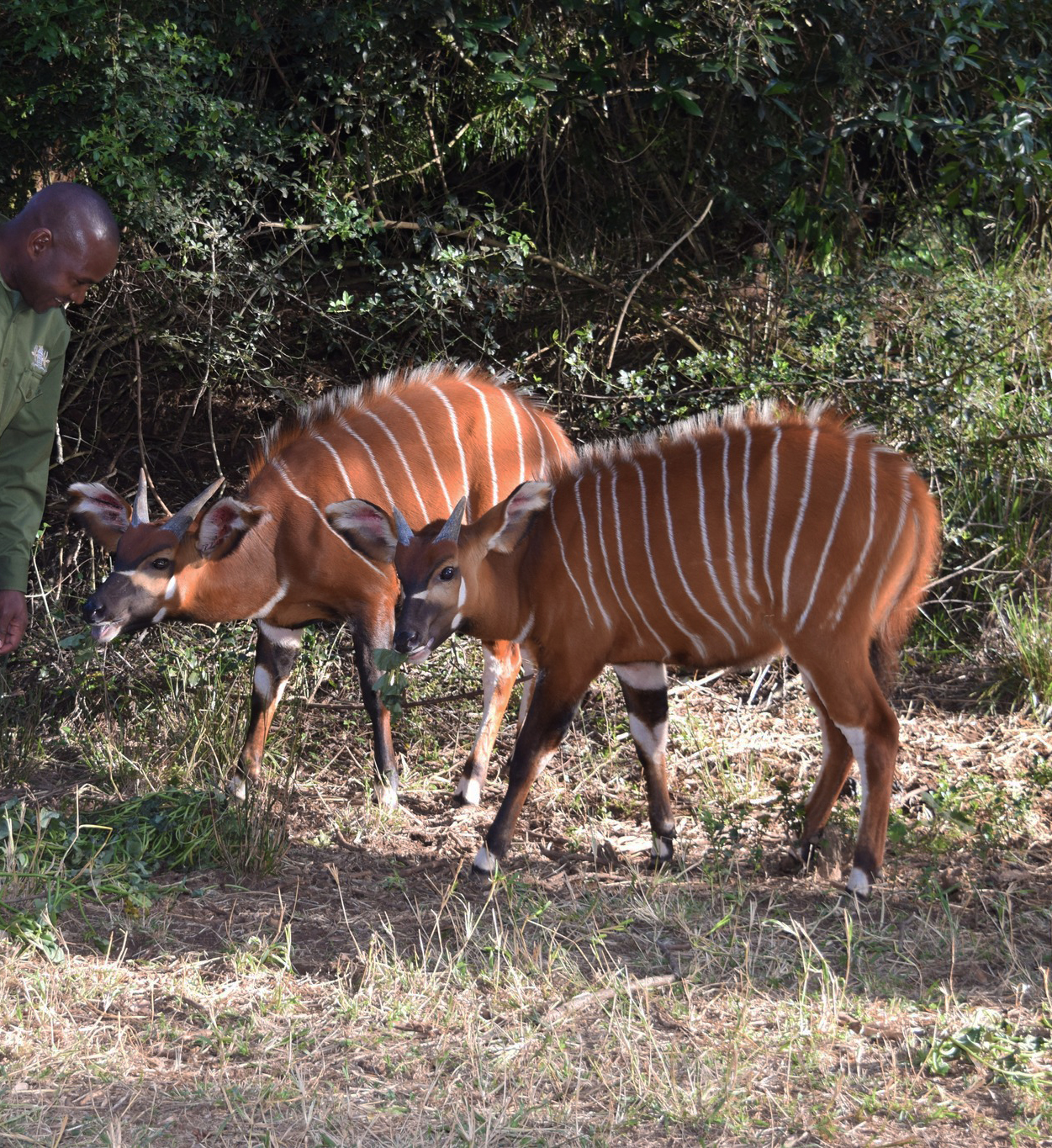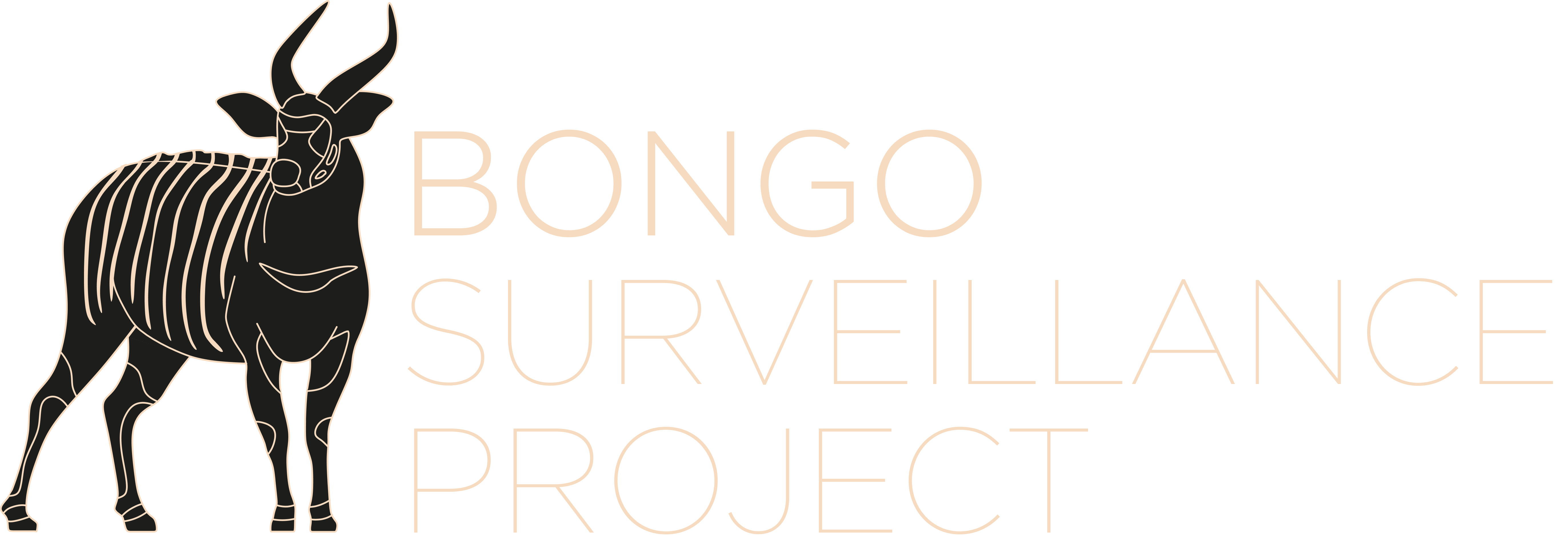About Mountain Bongo
The Mountain bongo or Eastern bongo (tragelaphus eurycerus isaaci) is one of the world’s largest forest-dwelling antelopes and is endemic to central Kenya. It is one of two subspecies of bongo, the other being the Lowland or Western Bongo (tragelaphus eurycerus eurycerus), which inhabits lowland equatorial forests throughout the Congo basin and West Africa.
Dark muzzle face, with stripes between the eyes and white spots on the cheeks
Chestnut brown fur with 12 to 14 vertical white stripes along their sides
Largest forest antelope
Only species of spiral-horned antelope in which box sexes have horns
Up to 20 years
Larger in size and more brightly coloured than its lowland relative, the mountain bongo was classified as a subspecies in 2008. Bongos are known for their striking appearance, with a vibrant reddish-brown coat and striking white-yellow stripes along the body. Both males and females have long, slightly spiralled horns.
Despite their elusive nature, the Mountain bongo plays a crucial role in their ecosystem as seed dispersers and prey for predators. Their conservation is vital not only for their own survival but for the overall health of the forest ecosystem they call home. The work of BSP hopes to help unravel the mysteries of mountain bongo biology and ecology in order to successfully protect them and conserve their habitats, along with other important species that inhabit them.

HABITAT AND RANGE

The mountain bongo is found in the montane forests of the Kenyan highlands: The Aberdares, Mount Kenya, the Maasai-Mau Forest and Eburru Forest. The extreme nature of the animal's core habitat - impenetrable high-altitude forest and bamboo thickets in precariously steep ravines - presents challenges to conventional tracking and monitoring methods. Often the only evidence they are present at all are the spoor (hoof prints) and droppings they leave behind.

BEHAVIOUR AND SOCIAL SYSTEM

Very little is known about the social organisation of bongos in the wild due to their rarity and secretive nature. It is thought that females and young may form loose herds, as seen in our camera trap images. Historical records suggest mature males are largely solitary, though it is known for younger males to accompany mature individuals. Males have also been seen with a harem of females. Bongos are not thought to be territorial and, unlike many other antelope species, do not possess any obvious scent glands for marking. They are thought to be mostly crepuscular, feeding on mountainside vegetation before retreating to rest and ruminate during the day in the safety of the dense forest undergrowth. Many of our camera trap images are taken during the night, particularly in early morning (between the hours of 01:00 and 05:00) which means they are perhaps more nocturnal than originally thought.

DIET

Through our tracking and monitoring work, we have been studying the diet of bongos in the wild. They are both grazers and browsers of mountainside vegetation and demonstrate selective feeding habits. They mostly appear to browse on leguminous plants, shrubs, vines and leaves, graze grasses in forest clearings and may eat some wild fruits. Interestingly, bongos are known to travel large distances to visit natural clearings in the forest where they consume salt and other minerals from the mud, soil and even burnt wood. These minerals may have a role in protecting them from certain toxic compounds in the plants they eat. Some bongos have been observed making their own mud clearings, sometimes called "bongo wallows", though they have never been recorded actually wallowing.
+254 733 642 320
Sangare Conservancy, Mweiga, Aberdare National Park, Kenya
